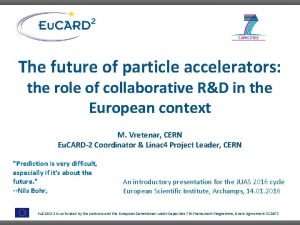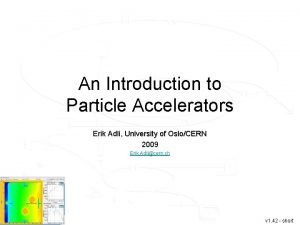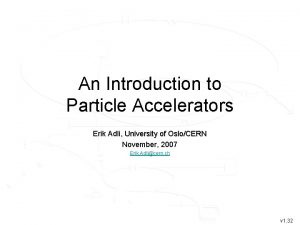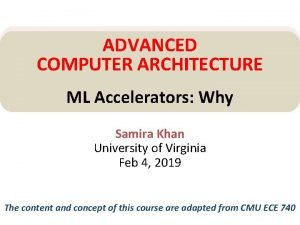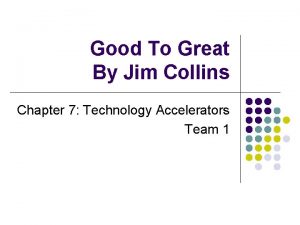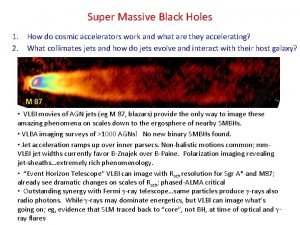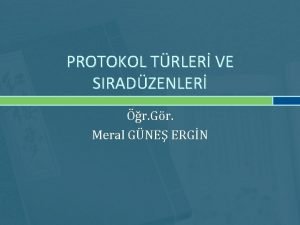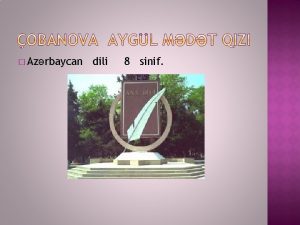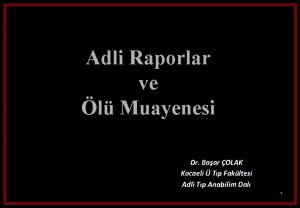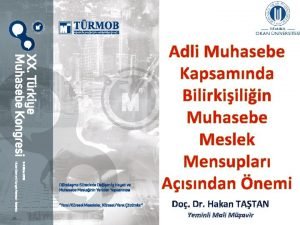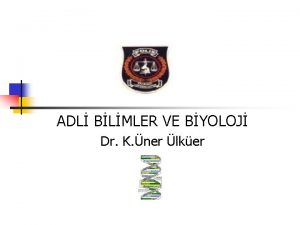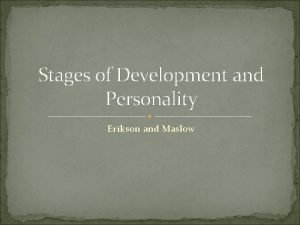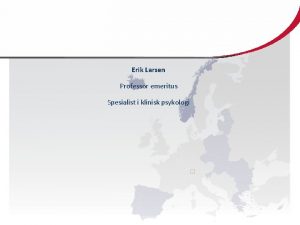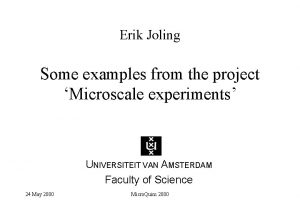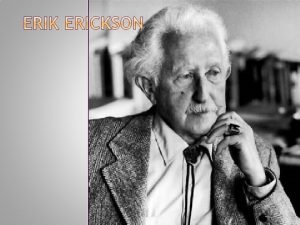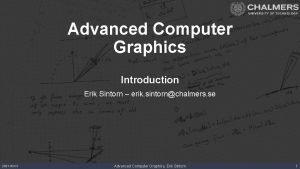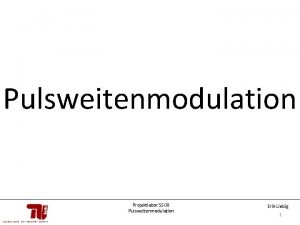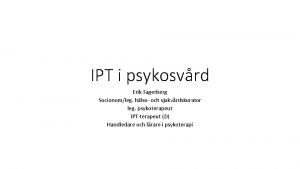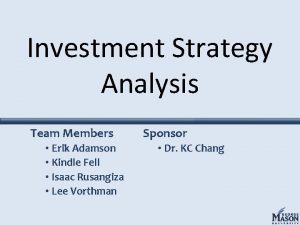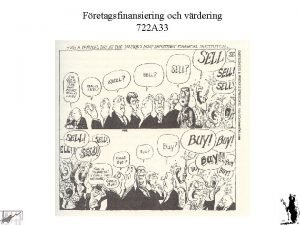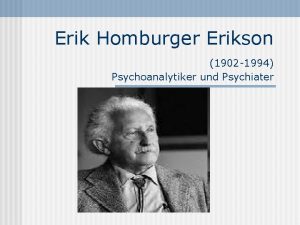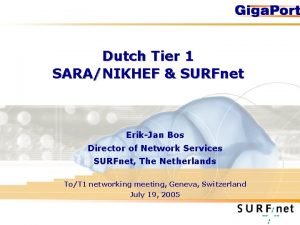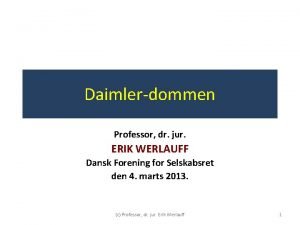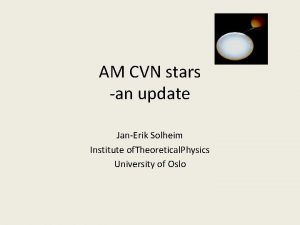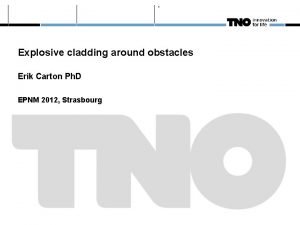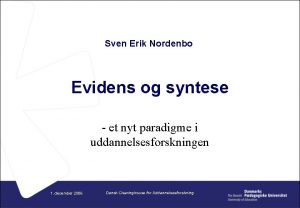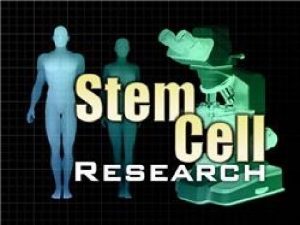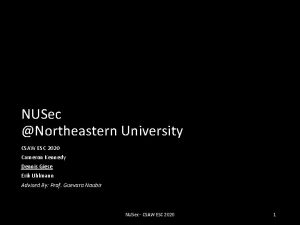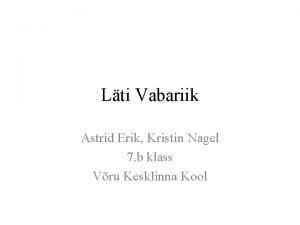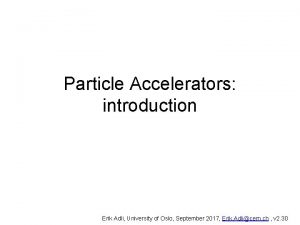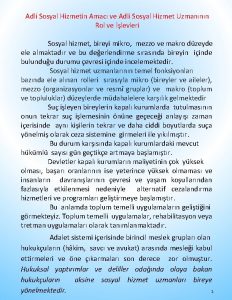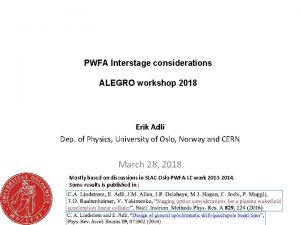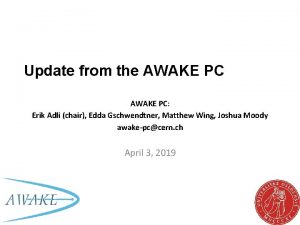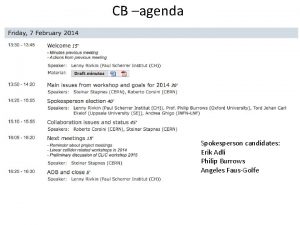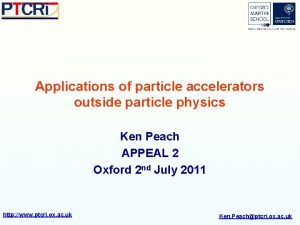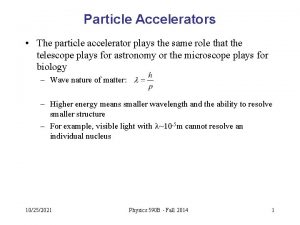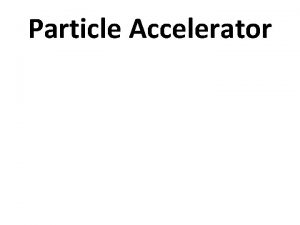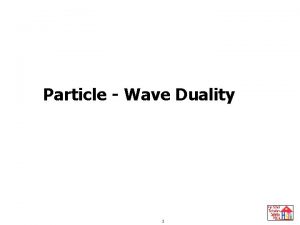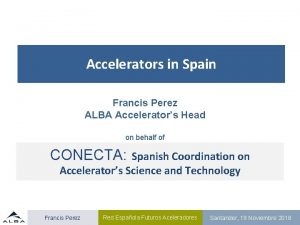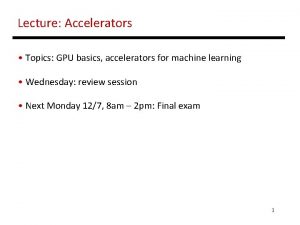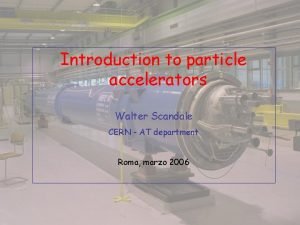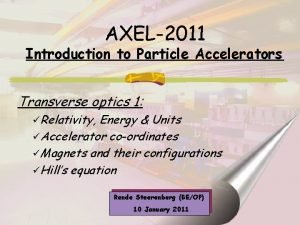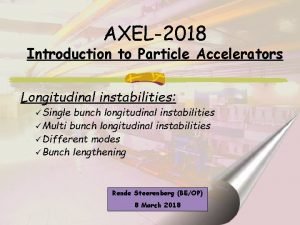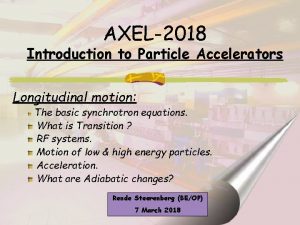An Introduction to Particle Accelerators Erik Adli University





















































































- Slides: 85

An Introduction to Particle Accelerators Erik Adli, University of Oslo/CERN November, 2007 Erik. Adli@cern. ch v 1. 32

References • Bibliography: – CAS 1992, Fifth General Accelerator Physics Course, Proceedings, 7 -18 September 1992 – LHC Design Report [online] – K. Wille, The Physics of Particle Accelerators, 2000 • Other references – – – – USPAS resource site, A. Chao, USPAS January 2007 CAS 2005, Proceedings (in-print), J. Le Duff, B, Holzer et al. O. Brüning: CERN student summer lectures N. Pichoff: Transverse Beam Dynamics in Accelerators, JUAS January 2004 U. Am aldi, presentation on Hadron therapy at CERN 2006 Various CLIC and ILC presentations Several figures in this presentation have been borrowed from the above references, thanks to all!

Part 1 Introduction

Particle accelerators for HEP • LHC: the world biggest accelerator, both in energy and size (as big as LEP) • Under construction at CERN today • End of magnet installation in 2007 • First collisions expected summer 2008

Particle accelerators for HEP The next big thing. After LHC, a Linear Collider of over 30 km length, will probably be needed (why? )

Others accelerators • Historically: the main driving force of accelerator development was collision of particles for high-energy physics experiments • However, today there are estimated to be around 17 000 particle accelerators in the world, and only a fraction is used in HEP • Over half of them used in medicine • Accelerator physics: a disipline in itself, growing field • Some examples:

Medical applications • Therapy – The last decades: electron accelerators (converted to X-ray via a target) are used very successfully for cancer therapy) – Today's research: proton accelerators instead (hadron therapy): energy deposition can be controlled better, but huge technical challenges • Imaging – Isotope production for PET scanners

Advantages of proton / ion-therapy ( Slide borrowed from U. Am aldi )

Proton therapy accelerator centre HIBAC in Chiba ( Slide borrowed from U. Am aldi ) What is all this? Follow the lectures. . . : )

Synchrotron Light Sources • • • the last two decades, enormous increase in the use of synchrony radiation, emitted from particle accelerators Can produce very intense light (radiation), at a wide range of frequencies (visible or not) Useful in a wide range of scientific applications

Outline of presentation Part 1: Intro + Main parameters + Basic Concepts Part 2: Longitudinal Dynamics Part 3: Transverse Dynamics Case: LHC Part 4: Intro to synchrotron radiation Part 5: The road from LEP via LHC to CLIC Case: CLIC

Main Parameters

Main parameters: particle type • Hadron collisions: compound particles – Mix of quarks, anti-quarks and gluons: variety of processes – Parton energy spread – Hadron collisions large discovery range • Lepton collisions: elementary particles – Collision process known – Well defined energy – Lepton collisions precision measurement “If you know what to look for, collide leptons, if not collide hadrons”

Main parameters: particle type Discovery Spp. S / LHC Precision LEP / LC

Main parameters: particle energy • New physics can be found at larger unprobed energies • Energy for particle creation: centre-of-mass energy, ECM • Assume particles in beams with parameters m, E, E >> mc 2 – Particle beam on fixed target: – Colliding particle beams: • Colliding beams much more efficient

Main parameters: luminosity • High energy is not enough ! • Cross-sections for interesting processes are very small (~ pb = 10− 36 cm² ) ! – s(gg → H) = 23 pb [ at s 2 pp = (14 Te. V)2, m. H = 150 Ge. V/c 2 ] – We need L >> 1030 cm-2 s-1 in order to observe a significant amount of interesting processes! • L [cm-2 s-1] for “bunched colliding beams” depends on – number of particles per bunch (n 1, n 2) – bunch transverse size at the interaction point ( x, y ) – bunch collision rate ( f)

Main parameters: LEP and LHC LEP LHC Particle type(s) e+ and e- p, ions (Pb, Au) Collision energy (Ecm) 209 Ge. V (max) p: 14 Te. V at p (~ 2 -3 Te. V mass reach, depending on physics) Pb: 1150 Te. V Luminosity (L) Peak: 1032 cm-2 s-1 Daily avg last years: 1031 cm-2 s-1 Integrated: ~ 1000 pb-1 (per experiment) Peak: 1034 cm-2 s-1 (IP 1 / IP 5)

Capabilities of particle accelerators • A modern HEP particle accelerator can accelerate particles, keeping them within millimeters of a defined reference trajectory, and transport them over a distance of several times the size of the solar system HOW?

HOW? • In this presentation we try to explain this by studying: – the basic components of an accelerator – the physical mechanisms that determines the particle motion – how particles (more or less) follow a specified path, even if our accelerator is not designed perfectly • At the end, we use what we have learned in a case-study: the LHC

Part 2 Basic concepts

An accelerator • • Structures in which the particles will move Structures to accelerate the particles Structures to steer the particles Structures to measure the particles

Lorentz equation • The two main tasks of an accelerator – Increase the particle energy – Change the particle direction (follow a given trajectory, focusing) • Lorentz equation: • FB v FB does no work on the particle – Only FE can increase the particle energy • FE or FB for deflection? v c Magnetic field of 1 T (feasible) same bending power as en electric field of 3 108 V/m (NOT feasible) – FB is by far the most effective in order to change the particle direction

Acceleration techniques: DC field • The simplest acceleration method: DC voltage • Energy kick: E=q. V • Can accelerate particles over many gaps: electrostatic accelerator • Problem: breakdown voltage at ~10 MV • DC field still used at start of injector chain

Acceleration techniques: RF field • Oscillating RF (radio-frequency) field • “Widerøe accelerator”, after the pioneering work of the Norwegian Rolf Widerøe (brother of the aviator Viggo Widerøe) • Particle must sees the field only when the field is in the accelerating direction – Requires the synchronism condition to hold: Tparticle =½TRF • Problem: high power loss due to radiation

Principle of phase focusing . . . what happens to particles with energies slightly off the nominal values. . . ?

Acceleration techniques: RF cavities • Electromagnetic power is stored in a resonant volume instead of being radiated • RF power feed into cavity, originating from RF power generators, like Klystrons • RF power oscillating (from magnetic to electric energy), at the desired frequency • RF cavities requires bunched beams (as opposed to beams) – particles located in bunches separated in space coasting

Acceleration techniques: Pill-Box cavity • Ideal cylindrical cavity: • Solution for E and H are oscillating modes (of increasing frequency) • The fundamental mode normally used for acceleration is named TM 010 with the following features: – Ez is constant in space along the axis of acceleration, z, at any instant – l 010 = 2. 6 a, l < 2 a • Acceleration efficiency of cavity depends on the transit-time factor – Ratio of “actual energy gain”, versus “energy gain if the field was constant in time“ – Example: l = l / 2 gives q=p and T=0. 64

From pill-box to real cavities (from A. Chao) LHC cavity module ILC cavity

Why circular accelerators? • Technological limit on the electrical field in an RF cavity (breakdown) • Gives a limited E per distance • Circular accelerators, in order to re-use the same RF cavity • This requires a bending field FB in order to follow a circular trajectory (later slide)

The synchrotron • Acceleration is performed by RF cavities • (Piecewise) circular motion is ensured by a guide field FB • FB : Bending magnets with a homogenous field • In the arc section: • RF frequency must stay locked to the revolution frequency of a particle (later slide) • Almost all present day particle accelerators are synchrotrons

Digression: other accelerator types • Cyclotron: – – – • constant B field constant RF field in the gap increases energy radius increases proportionally to energy limit: relativistic energy, RF phase out of synch In some respects simpler than the synchrotron, and often used as medical accelerators Synchro-cyclotron – Cyclotron with varying RF phase • Betatron – Acceleration induced by time-varying magnetic field • The synchrotron will be the only type discussed in this course

Particle motion • We separate the particle motion into: – longitudinal motion: motion tangential to the reference trajectory along the accelerator structure, us – transverse motion: degrees of freedom orthogonal to the reference trajectory, ux, uy • us, ux, uy are unit vector in a moving coordinate system, following the particle


Part 3 Longitudinal dynamics and acceleration Longitudinal Dynamics: degrees of freedom tangential to the reference trajectory us: tangential to the reference trajectory

RF acceleration • We assume a cavity with an oscillating RF-field: • In this section we neglect the transit-transit factor – we assume a field constant in time while the particle passes the cavity • Work done on a particle inside cavity:

Synchrotron with one cavity • The energy kick of a particle, E, depends on the RF phase seen, f • We define a “synchronous particle”, s, which always sees the same phase fs passing the cavity w. RF =h wrs ( h: “harmonic number” ) • E. g. at constant speed, a synchronous particle circulating in the synchrotron, assuming no losses in accelerator, will always see fs=0

Non-synchronous particles • A synchronous particle P 1 sees a phase fs and get a energy kick Es • A particle N 1 arriving early with f= fs-d will get a lower energy kick • A particle M 1 arriving late with f= fs+d will get a higher energy kick • Remember: in a synchrotron we have bunches with a huge number of particles, which will always have a certain energy spread!

Frequency dependence on energy • In order to see the effect of a too low/high E, we need to study the relation between the change in energy and the change in the revolution frequency (h: "slip factor") • Two effects: 1. Higher energy higher speed (except ultra-relativistic) 2. Higher energy larger orbit “Momentum compaction”

Momentum compaction • Increase in energy/mass will lead to a larger orbit • We define the “momentum compaction factor” as: • a is a function of the transverse focusing in the accelerator, a=<Dx> / R – a is a well defined quantity for a given accelerator

Calculating h • Logarithmic differentiation gives: • For a momentum increase dp/p: – – h>0: velocity increase dominates ( fr increases ) h<0: circumference increase dominates ( fr decreases )

Phase stability • h>0: velocity increase dominates, fr increases • Synchronous particle stable for 0º<fs<90º • h<0: stability for 90º<fs<180º • h=0 is called transition. When the synchrotron reaching this energy, the RF phase needs to be switched rapidly from fs to 180 -fs – A particle N 1 arriving early with f= fs-d will get a lower energy kick, and arrive relatively later next pass – A particle M 1 arriving late with f= fs+d will get a higher energy kick, and arrive relatively earlier next pass

Longitudinal phase-space (from A. Chao) d = p/p Phase-space for a harmonic oscillator: H = p 2 / 2 + x 2 / 2 Longitudinal phase-space showing the synchrotron motion Synchrotron motion: "particles rotate in the phase-space"

Synchrotron oscillations • Analysis of small amplitude oscillations gives: • As result of the phase stability, the energy and phase will oscillate, resulting in longitudinal synchrotron oscillations: • Equation of an Harmonic Oscillator • For derivations, please refer to [Wille 2000]

Synchrotron: energy ramping • We now wish to ramp up the energy of the particle. What do we do? • Each time the synchronous particle passes the cavity it will receive a momentum kick: • We want the synchronous particle to on the same trajectory (reference trajectory) regardless of particle energy. Therefore, we require the field and the particle momentum to increase proportionally: • Combining gives: • Thus, for a given d. B/dt profile the synchronous phase is given as: • For a given B’ , the synchronous particles will, by definition, see the phase fs

Summary: longitudinal dynamics for a synchrotron • Summary: to ramp up the energy in a synchrotron – Simply ramp up the magnetic field – With the (automatic) RF frequency modulation the synchronous particle will stay on the reference orbit – Due to the phase-stability, the particles in the phase-space vicinity of the synchronous particle will be captured by the RF and will also be accelerated at the same rate, undergoing synchrotron oscillations


Part 4 Transverse dynamics: degrees of freedom orthogonal to the reference trajectory ux: the horizontal plane uy: the vertical plane

Bending field • Circular accelerators: deflecting forces are needed • Circular accelerators: piecewise circular orbits with a defined bending radius – Straight sections are needed for e. g. particle detectors – In circular arc sections the magnetic field must provide the desired bending radius: • For a constant particle energy we need a constant B field dipole magnets with homogenous field • In a synchrotron, the bending radius, 1/ =e. B/p, is kept constant during acceleration (last section)

The reference trajectory – We need to steer and focus the beam, keeping all particles close to the reference orbit Dipole magnets to steer homogenous field or cosq distribution Focus?

Focusing field: quadrupoles • Quadrupole magnets gives linear field in x and y: Bx = -gy By = -gx • However, forces are focusing in one plane and defocusing in the orthogonal plane: Fx = -qvgx (focusing) Fy = qvgy (defocusing) Alternating gradient scheme, leading to betatron oscillations

The Lattice • An accelerator is composed of bending magnets, focusing magnets and non -linear magnets (later) • The ensemble of magnets in the accelerator constitutes the “accelerator lattice”

Stability of a FODO structure • There are limitions to the achievable focusing effect; too short focal length will give overfocusing, and an unstable trajectory:

Example: lattice components

Equations of motion: coordinates • Coordinate system: • x, y are small deviations from the reference trajectory – x: deviations in the horizontal plane – y: deviations in the vertical plane • r= +x

Linear equations of motion I • From classical mechanics we get the exact equations of motion : • Preferred: x(s) instead of x(t), x’(s) is the slope • Approximation: • Equations of motions become:

Linear equations of motion II • Approximations: • We use the quadrupole strength: • Basic linear trajectory equations: – k: normalized quadrupole strength – 1/ : normalized dipole strength – p 0 is the reference momentum, p is the momentum deviation

Mathematical description • The linearized deviations from the reference orbit can be described by Hill's equation • no field: K(s)=0 • inside a dipole K(s) = 1/r 2 • inside a quadrupole K(s)=+-k

Particle motion: general solutions of Hill's equation • We have calculated particle motion for a single particle by studying the transfer matrices M(s). We now want to find characteristics of the general aspects of the motion • Solution of Hill’s equation with K(s) =K harmonic oscillator • The general solution of Hill’s equation with is: b(s): the "beta function" • Oscillating solution, but with amplitude and phase-advance dependent on s ! – a “quasi-harmonic” oscillator

The transverse beam size • A very important parameter – Vacuum chamber – Interaction point and luminosity • The transverse beam size is given by the envelope of the particles: Beam quality Lattice

The beta function, b • Twiss parameter b(s), ”the beta function”, defines the envelope for the solutions of Hill’s, and thus envelope for the particle motion ( p=0) • In a FODO structure the beta function is at maximum in the middle of the F quadrupole and at minimum in the middle of the D quadrupole • NB: Even if beta function is periodic, the particle motion itself is in general not periodic (after one revolution the initial condition f 0 is altered) • The beta function should be kept at minimum, b*, at interaction points to maximize the luminosity

Example: motion in a FODO lattice (From CAS 1992)

Transverse phase-space • The phase-space of the horizontal plane is spanned by the two coordinates [x, x’] • For a fixed point, s, on the accelerator [x, x’] is a representation of an ellipse parametric – envelope: – divergence: • For each turn the particle moves around the ellipse according to its tune (non-integer part) • The shape of the ellipse depends b(s) and b'(s), and thus the position along the ring

Emittance • The solution of Hill's for a given particle is determined by initial conditions [x 0, x'0]. An ideal particle will have [x 0, x'0] = [0, 0] and x(s) = 0 • A given beam consists of particles of various amplitude and angle. At a certain point s, the particles will fill the phase-space ellipse • As long as a particle is inside the phase-space ellipse, it will remain there, and the area of the ellipse is constant (Liouville's theorem) • e is called the beam emittance (horizontal / vertical) – very important parameter for beam quality • Small emittance strongly desired: – Keep beam envelope and beam divergence small – Keep luminosity high

RMS transverse beam size • In reality: what is often quoted is the RMS emittance, and the RMS beam size • RMS emittance erms: resulting phase-space ellipse contains one s of particles • RMS beam size: Beam quality Lattice

Conclusion: transverse dynamics • We have now studied the transverse optics of a circular accelerator and we have had a look at the optics elements, – the dipole for bending – the quadrupole for focusing – (sextupole for chromaticity correction – not discussed here) • All optic elements (+ more) are needed in a high performance accelerator, like the LHC


Intermezzo Norske storheter innen akseleratorfysikk Bjørn Wiik Rolf Wideröe Pioneer både for betatronprinsippet og for lineære akseleratorer Odd Dahl Leder av CERN PS prosjektet (en viktig del av LHCkomplekset den dag i dag) Professor og direktør ved Europas nest største akseleratorsenter (DESY i Hamburg) Kjell Johnsen Involvert i en rekke CERNprosjekter, leder av ISR og CERN's gruppe for akseleratorforskning

Case: LHC

LHC

LHC: wrt. to earlier slides • proton-proton collisions two vacuum chambers, with opposite bending field • RF cavities bunched beams • Synchrotron with alternating-gradient focusing • Superconducting lattice magnets and superconducting RF cavities • Regular FODO arc-section with sextupoles for chromaticity correction • Proton chosen as particle type due to low synchrotron radiation • Magnetic field-strength limiting factor for particle energy

LHC injector system • LHC is responsible for accelerating protons from 450 Ge. V up to 7000 Ge. V • 450 Ge. V protons injected into LHC from the SPS • PS injects into the SPS • LINACS injects into the PS • The protons are generated by a Duoplasmatron Proton Source

LHC layout • circumference = 26658. 9 m • 8 interaction points, 4 of which contains detectors where the beams intersect • 8 straight sections, containing the IPs, around 530 m long • 8 arcs with a regular lattice structure, containing 23 arc cells • Each arc cell has a FODO structure, 106. 9 m long

LHC beam transverse size beta in drift space: b(s) = b* + (s-s*)2 / b*

LHC cavities • Superconducting RF cavities (standing wave, 400 MHz) • Each beam: one cryostats with 4+4 cavities each • Located at LHC point 4

LHC main parameters at collision energy Particle type Proton energy Ep at collision Peak luminosity (ATLAS, CMS) Circumference C Bending radius RF frequency f. RF # particles per bunch np # bunches nb p, Pb 7000 Ge. V 10 x 1034 cm-2 s-1 26 658. 9 m 2804. 0 m 400. 8 MHz 1. 15 x 1011 2808


Part 5 Synchrotron radiation

1) Synchrotron radiation • Charged particles undergoing acceleration emit electromagnetic radiation • Main limitation for circular electron machines – RF power consumption becomes too high • The main limitation factor for LEP. . . –. . . the main reason for building LHC ! • However, synchrotron radiations is also useful (see later slides)

Show RAD 2 D here (anim)

Characteristic of SR: power

Characteristics of SR: distribution • Electron rest-frame: radiation distributed as a "Hertz-dipole" • Relativist electron: Hertz-dipole distribution in the electron rest-frame, but transformed into the laboratory frame the radiation form a very sharply peaked light-cone

Characteristics of SR: spectrum • • Broad spectra (due to short pulses as seen by an observer) But, 50% of power contained within a well defined "critical frequency" Summary: advantages of Synchrotron Radiation 1. Very high intensity 2. Spectrum that cannot be covered easy with other sources 3. Critical frequency easily controlled

Typical SR centre Accelerator + Users Some applications of Synchrotron Radiation: • material/molecule analysis (UV, X-ray) • crystallography • Archaeology


References • Bibliography: – CAS 1992, Fifth General Accelerator Physics Course, Proceedings, 7 -18 September 1992 – LHC Design Report [online] – K. Wille, The Physics of Particle Accelerators, 2000 • Other references – – – – USPAS resource site, A. Chao, USPAS January 2007 CAS 2005, Proceedings (in-print), J. Le Duff, B, Holzer et al. O. Brüning: CERN student summer lectures N. Pichoff: Transverse Beam Dynamics in Accelerators, JUAS January 2004 U. Am aldi, presentation on Hadron therapy at CERN 2006 Various CLIC and ILC presentations Several figures in this presentation have been borrowed from the above references, thanks to all!
 The long-term future of particle accelerators
The long-term future of particle accelerators Erik adli
Erik adli Erik adli
Erik adli Accelerators computer architecture
Accelerators computer architecture Kotter 8 accelerators
Kotter 8 accelerators Good to great technology accelerators
Good to great technology accelerators Good to great chapter 6
Good to great chapter 6 Cosmic super accelerators
Cosmic super accelerators Set current query acceleration
Set current query acceleration Dilber adlı cariye
Dilber adlı cariye Adli vakalara ait tüm tahlil tetkik sonuçları
Adli vakalara ait tüm tahlil tetkik sonuçları Ankara barosu adli yardım yönergesi
Ankara barosu adli yardım yönergesi T.c.devlet protokol sıralaması 2020
T.c.devlet protokol sıralaması 2020 Teatr xadimlərimiz adlı təqdimat hazırlayın
Teatr xadimlərimiz adlı təqdimat hazırlayın Namık ismail'in son mermi eseri
Namık ismail'in son mermi eseri Müslümenin adli tıp raporu
Müslümenin adli tıp raporu Adli tıp
Adli tıp Adli olgu nedir
Adli olgu nedir Adli muhasebe nedir
Adli muhasebe nedir Adliye yazı işleri müdürünün görevleri
Adliye yazı işleri müdürünün görevleri Adli muhasebe bilirkişi
Adli muhasebe bilirkişi Dr ner
Dr ner Mitelar
Mitelar Adult literacy
Adult literacy 沈榮麟
沈榮麟 Sven erik gisvold
Sven erik gisvold Erikson vs maslow
Erikson vs maslow Erik poll
Erik poll Erik olin wright sınıf kuramı
Erik olin wright sınıf kuramı Owinsp
Owinsp Biographie erik h. erikson
Biographie erik h. erikson Kyssande vind
Kyssande vind Erik van der hoek
Erik van der hoek Lars erik smevold
Lars erik smevold Lars erik smevold
Lars erik smevold Datalogar
Datalogar John erik nygaard
John erik nygaard Erik peter verlinde
Erik peter verlinde Motto boek
Motto boek Miljøterapi definisjon
Miljøterapi definisjon Erik joling
Erik joling Erik homburger erikson
Erik homburger erikson Rektor erik dahlbergsgymnasiet
Rektor erik dahlbergsgymnasiet Erik gottschalk
Erik gottschalk Erik dörnenburg
Erik dörnenburg Erik takayesu
Erik takayesu Erik sintorn
Erik sintorn Erik maranik
Erik maranik Erik mathijs
Erik mathijs Erik rammeloo
Erik rammeloo Erik shearer
Erik shearer Erik sintorn
Erik sintorn Erik fidel
Erik fidel Erik weijers
Erik weijers Erik homburger erikson teori
Erik homburger erikson teori Erik petko
Erik petko Erik hodneland
Erik hodneland Pulsweitenmodulation
Pulsweitenmodulation Erik briers
Erik briers Erik svensen
Erik svensen Jens erik paulsen
Jens erik paulsen Kognitiva scheman är medfödda
Kognitiva scheman är medfödda Erik fagerberg
Erik fagerberg Erik adamson
Erik adamson Fredric cyon
Fredric cyon Erik seligman
Erik seligman Erik chevrier
Erik chevrier Erik demaine
Erik demaine Erik veerman
Erik veerman Erik jonsson school of engineering and computer science
Erik jonsson school of engineering and computer science Erikson epigenetisches prinzip
Erikson epigenetisches prinzip Erik weytjens
Erik weytjens Erik-jan bos
Erik-jan bos Erik jullumstrø
Erik jullumstrø Werlauff død
Werlauff død De knop erik
De knop erik Jan erik solheim
Jan erik solheim Erik carton
Erik carton Erik weijers
Erik weijers Sven erik nordenbo
Sven erik nordenbo Erik florin
Erik florin Karl erik tillmann
Karl erik tillmann Dr erik uhlmann
Dr erik uhlmann Kristin nagel
Kristin nagel Processhanteringssystem
Processhanteringssystem Dr pianka
Dr pianka
